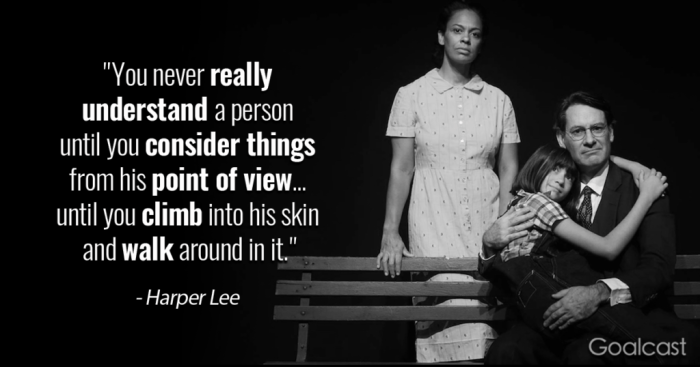Ar test answers for the lost hero – Embark on an extraordinary literary journey with our comprehensive AR test answers for “The Lost Hero,” where you’ll unravel the captivating world of Greek mythology and discover the secrets that lie within.
Immerse yourself in the intricate details and engaging characters that bring this epic tale to life. From the enigmatic Jason Grace to the mystical Camp Half-Blood, our expert analysis will guide you through every twist and turn of this thrilling adventure.
Key Character and Setting Analysis: Ar Test Answers For The Lost Hero
In Rick Riordan’s thrilling novel, The Lost Hero, the characters and setting play pivotal roles in driving the plot and shaping the narrative. Jason Grace, a demigod son of Jupiter, emerges as a central figure, while Camp Half-Blood serves as a vibrant and dynamic backdrop for the unfolding events.
Jason Grace
Jason is a charismatic and courageous leader who embodies the virtues of a true hero. Despite his amnesia, he quickly adapts to his newfound surroundings and proves to be a skilled fighter and strategist. His unwavering determination and sense of duty drive him to protect his friends and complete his mission.
Camp Half-Blood
Nestled in the heart of Long Island, Camp Half-Blood is a sanctuary for demigods. Its sprawling grounds include a vast training arena, cozy cabins, and the legendary Oracle of Delphi. The camp’s idyllic setting fosters a sense of community and belonging, while its ancient rituals and traditions connect the demigods to their divine heritage.
Interaction of Setting and Characters
The interplay between Camp Half-Blood and its inhabitants shapes the plot in significant ways. The camp’s facilities provide training grounds for the demigods, preparing them for the challenges ahead. Its cabins offer a sense of home and security, while the Oracle’s prophecies guide their destiny.
Jason’s leadership qualities are amplified within the camp environment. As the son of Jupiter, he commands respect and loyalty from his fellow demigods. The camp’s atmosphere of camaraderie and support fuels his determination and strengthens his resolve.
Plot Summary and Structure
Rick Riordan’s The Lost Hero follows the adventures of Jason Grace, Piper McLean, and Leo Valdez as they embark on a quest to save their kidnapped friend, Hera, and prevent the rise of an ancient evil. Along the way, they face numerous challenges and uncover secrets about their own pasts.
The novel is structured with a clear rising action, climax, falling action, and resolution. The pacing is fast-paced, keeping readers engaged throughout the story. Foreshadowing and suspense are skillfully used to build anticipation and create a sense of urgency.
Rising Action
- Jason, Piper, and Leo meet at Camp Half-Blood and learn of Hera’s disappearance.
- They embark on a quest to find Hera and recover the stolen Zeus’s thunderbolt.
- They face challenges from monsters, demigods, and the forces of Gaia.
Climax
- Jason, Piper, and Leo confront Gaia’s forces at the Wolf House.
- They defeat Gaia’s army and rescue Hera.
- Leo sacrifices himself to destroy Gaia’s earthen body.
Falling Action, Ar test answers for the lost hero
- Jason, Piper, and Leo return to Camp Half-Blood with Hera.
- They learn of the prophecy foretelling their future roles in the war against the giants.
- Leo is revived and reunited with his friends.
Resolution
- Jason, Piper, and Leo prepare for the upcoming battle against the giants.
- The novel ends with a sense of hope and anticipation for the future.
Foreshadowing and Suspense
Riordan uses foreshadowing throughout the novel to hint at future events. For example, the prophecy about the seven demigods is mentioned early on, creating a sense of anticipation. Suspense is built through the use of cliffhangers and the constant threat of danger faced by the characters.
Themes and Symbolism
The Lost Hero explores various significant themes and utilizes powerful symbols to convey its deeper meanings.
Major Themes
- Friendship:The unwavering bond between Jason, Piper, and Leo serves as a testament to the strength of true friendship, even in the face of adversity.
- Loyalty:Despite their individual struggles and doubts, the heroes remain steadfastly loyal to their mission and to each other.
- Identity:The novel delves into the complex nature of identity, as Jason, Piper, and Leo grapple with their true origins and the expectations placed upon them.
Symbolism
Symbols play a pivotal role in conveying the novel’s themes and creating a deeper understanding of the characters’ journeys.
The Lost Hero
Jason’s amnesia and search for his true identity mirror the novel’s overarching theme of identity. He is both a symbol of the lost and the potential for redemption.
The Golden Fleece
The Fleece represents the heroes’ quest for healing and restoration, both physically and emotionally. It symbolizes their journey towards self-discovery and wholeness.
The Labyrinth
The Labyrinth represents the challenges and obstacles the heroes must overcome. It is a symbol of their inner struggles and the path they must navigate to find their true selves.
Contribution to Meaning
The themes and symbols in The Lost Hero work together to convey the novel’s central message about the power of friendship, loyalty, and self-discovery. They create a deeper level of understanding and add layers of meaning to the characters’ journeys.
Narrative Techniques
Rick Riordan employs various narrative techniques to immerse readers in the world of “The Lost Hero.” The story is predominantly told from the third-person perspective, allowing for an omniscient view of the characters and their actions. This perspective provides a comprehensive understanding of the characters’ motivations, thoughts, and experiences, offering readers a deep connection to their journey.
Use of Dialogue
Dialogue plays a crucial role in shaping the reader’s experience. Riordan uses dialogue to reveal character traits, advance the plot, and create tension. The conversations between the characters are authentic and relatable, capturing the nuances of their relationships and driving the narrative forward.
The dialogue also serves as a means of humor, adding levity to the often-serious tone of the story.
Descriptive Language
Riordan’s vivid descriptions paint a rich and immersive setting for the story. He employs sensory details to engage readers’ imaginations, allowing them to visualize the characters, environments, and events. The descriptions contribute to the overall atmosphere of the story, creating a sense of wonder, danger, and adventure.
Action Sequences
The story is punctuated by thrilling action sequences that keep readers on the edge of their seats. Riordan skillfully weaves action into the narrative, creating a sense of urgency and excitement. The action sequences are described in vivid detail, allowing readers to experience the characters’ struggles and triumphs firsthand.
These sequences add depth to the story, highlighting the characters’ bravery, determination, and resourcefulness.
Character Development and Relationships

Jason Grace, the son of Zeus, undergoes significant character development throughout The Lost Hero. Initially, he is arrogant and aloof, struggling to accept his newfound demigod status. However, as the story progresses, he embraces his responsibilities and becomes a true leader.
Relationships
Jason’s relationships with other characters play a crucial role in his growth. His bond with Piper McLean, the daughter of Aphrodite, challenges his preconceived notions about beauty and self-worth. Meanwhile, his friendship with Leo Valdez, the son of Hephaestus, teaches him the importance of loyalty and perseverance.
These relationships influence the plot by shaping Jason’s decisions and actions. For instance, Piper’s ability to charmspeak helps them overcome obstacles, while Leo’s ingenuity provides them with essential resources. Additionally, Jason’s growing sense of responsibility stems from his desire to protect those he cares about.
Literary and Cultural Connections
The Lost Hero draws upon a rich tapestry of literary and cultural influences, enriching its narrative with timeless themes and archetypal characters. These connections enhance the novel’s meaning, resonate with readers, and establish its relevance in contemporary society.
Mythological Parallels
The novel’s central plot revolves around Greek mythology, with its characters mirroring archetypal figures from classical epics. Jason, the protagonist, embodies the heroic qualities of the legendary Argonaut, embarking on a perilous quest to retrieve lost memories. Piper McLean, the daughter of Aphrodite, possesses the enchanting powers of a siren, echoing the mythological figure of Circe.
The novel’s antagonists, the giants and monsters, draw inspiration from the Titans and other formidable creatures of Greek myth.
Contemporary Significance
The novel’s portrayal of Greek mythology is not merely a nostalgic retelling but a reflection of its enduring relevance in contemporary society. By weaving mythological elements into a modern setting, Riordan explores timeless themes such as heroism, loyalty, and the battle between good and evil.
These themes resonate with readers of all ages, making the novel both entertaining and thought-provoking.
Popular Culture References
The Lost Hero also incorporates subtle references to popular culture, adding a layer of familiarity and humor. Jason’s favorite band, “The Flaming Arrows,” is a nod to the 1960s television series “The Monkees.” Piper’s passion for singing mirrors the aspirations of young performers on reality shows like “American Idol.”
These references create a bridge between the novel’s mythological roots and the experiences of contemporary readers.
FAQ Explained
What is the main conflict in “The Lost Hero”?
The main conflict revolves around Jason Grace and his fellow demigods as they embark on a perilous quest to save Hera, the queen of the gods, from the clutches of the evil goddess Gaea.
Who is the protagonist of “The Lost Hero”?
Jason Grace, a son of Zeus, is the central protagonist of the novel. He must overcome amnesia and navigate the complexities of his newfound world as a demigod.
What is the significance of the Golden Fleece in “The Lost Hero”?
The Golden Fleece is a magical artifact that holds the power to heal and protect. It becomes a crucial object in the demigods’ quest to save Hera.

